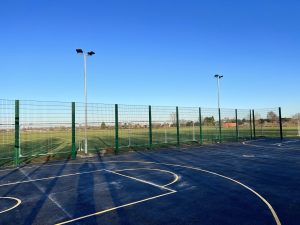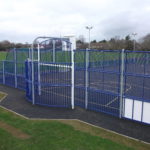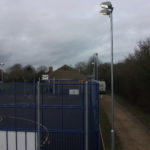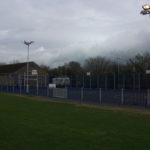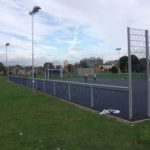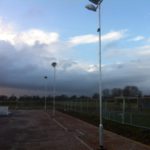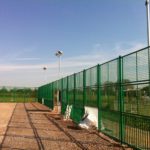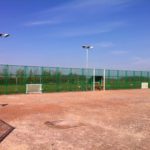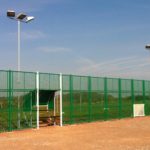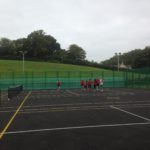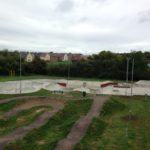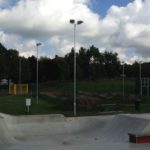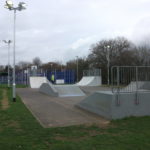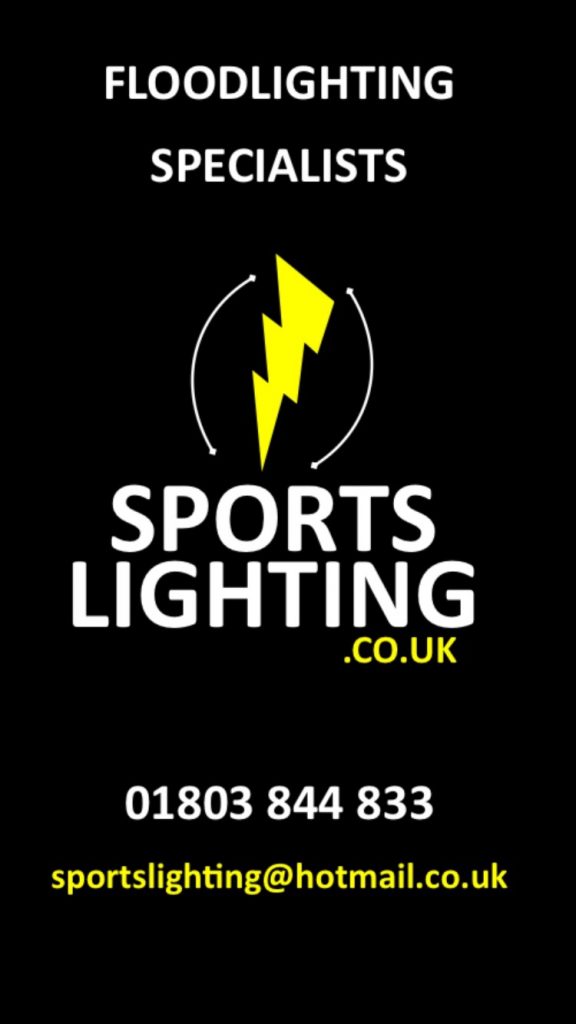MULTI USE GAMES AREAS.
The lighting needs to provide satisfactory conditions for each of the sporting activities which are to take place. Unless finance is available to install separate lighting schemes for each activity with suitable switching facilities, compromise will need to be reached whereby the lighting installation provide satisfactory lighting conditions for all activities. As these areas are designed primarily for recreational and training purposes, the individual requirements are not as stringent, and it is therefore usually possible to reach a compromise solution that will be generally satisfactory for all uses of the area.
Depending on the anticipated programme of use and standard of play be catered for, the floodlighting should normally be designed to provide acceptable conditions for the most visually demanding sport. This generally means sports involving a small, fast moving ball (e.g. tennis and hockey).The floodlighting will need to be designed predominantly for those sports whilst ensuring that the others will be able to be performed satisfactorily under the same conditions.
The smallest recommended multi use games area (approx 35m x 18m) will be able to provide for single court recreational tennis, basketball and netball plus five-a-side soccer, six-a-side hockey and for short tennis courts.
So that players can easily follow the ball, it is preferable for light to come from at least two sides. In order to restrict problems with glare, it is generally recommended that light sources are, as far as possible, located away from the main direction of view.
The lighting requirements will depend on the particular usage and type of surface and court markings etc, but in general the most important factors will be the illuminance, uniformity and glare control.
A side-lighting system using a minimum of two pairs of columns is normally the most satisfactory compromise for small areas. The column heights and spacing will depend on the equipment selected and other specific sire requirements (e.g. planning restriction, light spillage etc), but in general a minimum mounting height of 6-8m should be satisfactory in providing reasonable uniformity and controlling glare.
Where larger areas are involved, additional columns and/or increased column height may be required.

Budehaven College.
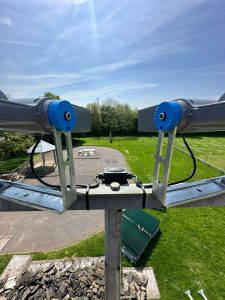
Marston Mortaine MUGA
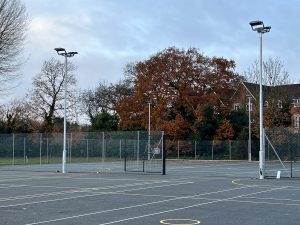
Slough School.
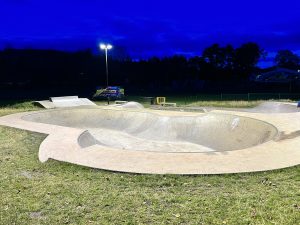
Bencrete Skateparks in Scotland

Ernsettle School. Plymouth

Somerton Skate Park
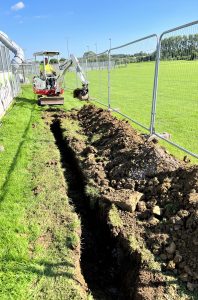
Somerton Skate Park.
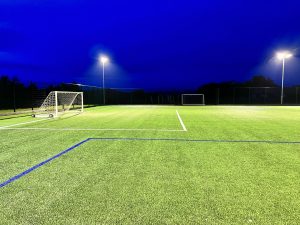
Community School Plymouth
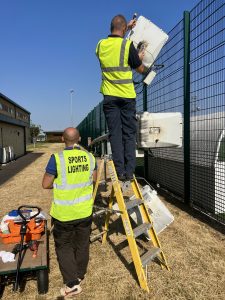
RNAS Yeovilton Base
